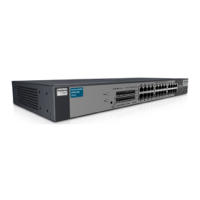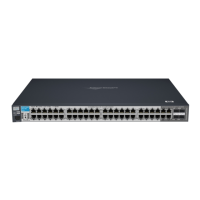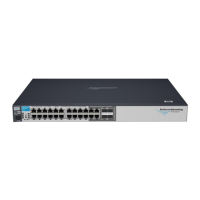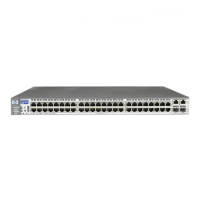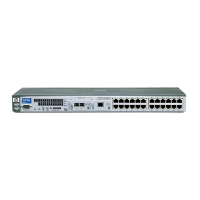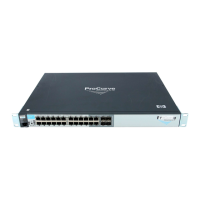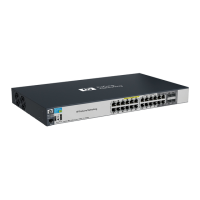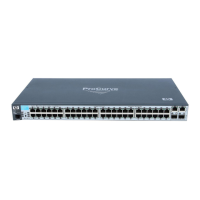4 – Index
Index
precautions … 2-4
on a horizontal surface … 2-17
N
network cables
1000Base-LH connections … 2-6
1000Base-LX connections … 2-6
1000Base-SX connections … 2-6
1000Base-T connections … 2-5
fiber-optic, specifications … B-2
MDIX feature … B-5
required types … 2-5
twisted-pair connector pin-outs … B-5
twisted-pair, wiring rules … B-5
network devices
connecting to the switch … 2-18
network ports
connecting to … 2-18
location on switch … 1-3
standards compliance … A-2
types of … 1-3, 2-5
non-standard network cables, effects … 4-2
O
out-of-band console access … 3-5
P
parts, included with the switch … 2-1
password
configuring … 3-2
passwords
deleting with the Clear button … 3-4
if you lose the password … 3-4
passwords,deleting … 1-8
physical specifications, switch … A-1
Ping test … 4-10
pin-outs
twisted-pair cables … B-5
port configuration
checking when troubleshooting … 4-3
port LEDs
description … 1-5
Link … 1-5
normal operation … 2-11
T and M … 1-6
ports
10/100Base-TX, location on switch … 1-3
connecting to … 2-18
console … 2-22
MDIX feature … B-5
network connections … 2-18
power connector … 1-9
Power LED … 1-5
behavior during self test … 2-11
behaviors … 1-5
location on switch … 1-3
power source
connecting the switch to … 2-17
precautions
mounting the switch … 2-4
power requirements … 2-4
preparing the installation site … 2-5
Proactive Network tools
diagnostics with … 4-8
R
rack
mounting precautions … 2-4
mounting the switch in … 2-11
Redundant Power Supply … 2-19
regulatory statements … C-8
Reset button
description … 1-8
location on switch … 1-3, 1-8
restoring factory default configuration … 4-11
resetting the switch
factory default reset … 4-11
location of Reset button … 1-8
troubleshooting procedure … 4-9
S
safety and regulatory statements … C-1
safety specifications … A-2
segment switch
sample topology … 2-25
selecting the LED Mode display … 1-7
self test
Fault LED behavior … 2-11
LED behavior during … 2-10
Power LED behavior … 2-11
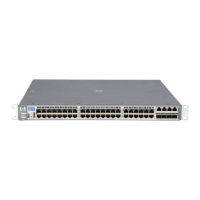
